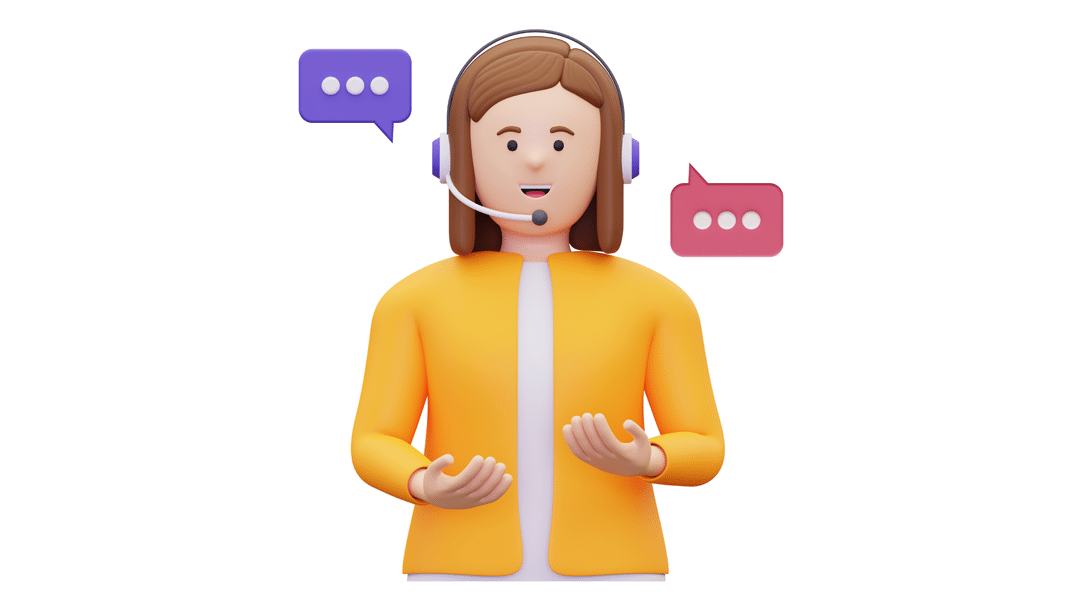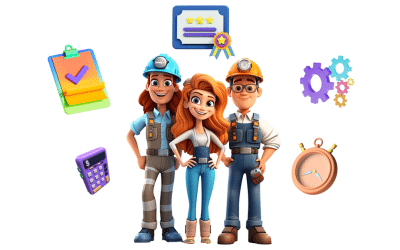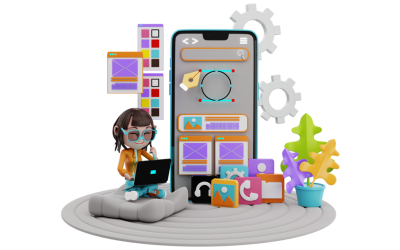Last Update on:

You’ve finally decided to ask for conference interpreting solutions for your upcoming event, especially because some guests speak uncommon and rare languages. But there are different types of conference interpreting, and you’re not sure which one is ideal for you. How will you get beyond this new obstacle of making a choice?
Conference interpreting is a highly specialized field involving trained experts to let people of widely varying linguistic backgrounds communicate. It’s instantly translating a speaker’s words, emotions, and tone from one language to another. The need for professional conference interpreters to facilitate dialogue and cooperation across borders has grown as the world becomes more interconnected.
Conference interpreting is vital in many contexts, including diplomatic discussions, academic conferences, commercial meetings, and international summits. Each kind of conference interpreting has its own specific criteria and defining features making it the best choice for a setting. In this article, we’ll look at the various subfields of conference interpretation and what sets them apart.
Table of Contents
- Simultaneous Interpreting
- Consecutive Interpreting
- Whispered Interpreting
- Relay Interpreting
- Sight Translation
- Remote Simultaneous Interpreting (RSI)
- Boothless Simultaneous Interpreting (BSI)
- Sign Language Interpreting
Simultaneous Interpreting
Most conferences employ simultaneous interpreting to communicate with speakers of different languages. It is also incorrectly known as “simultaneous translation” because translation is only done for written content. It entails the interpreter actively listening to the speaker and providing an immediate oral translation of what was said. The interpreter is isolated in a booth and uses headphones to hear what is said. They then talk into a microphone, which broadcasts their interpretation to the listeners’ headsets.
Concentration and fluency in more than one language are essential for successful simultaneous interpreting. For interpreters to be effective, they need to focus on what the speaker is saying while translating it into the target language. This form of interpretation is commonly employed at international conferences and other gatherings when several languages are spoken. In this kind of interpretation, there is a time limit for each interpreter’s nonstop performance during the turn-taking process, which should be no more than 30 minutes.
There is only one-way communication with simultaneous interpretation. Even if you can follow along with what the speaker is saying thanks to simultaneous interpretation, you won’t be able to share your ideas with them. This is why simultaneous interpretation is reserved for special events like conferences and public speeches.
The ability to quickly recall terminology and think on one’s feet are both essential skills for an interpreter who must relay the speaker’s message in real-time. In simultaneous interpretation, there are no pauses in the flow of conversation. It is an uninterrupted message transmission.
Due in part to the extra effort and expertise required, simultaneous interpretation services tend to be more expensive than consecutive ones. The necessity of things like microphones, headsets, screens, video cameras, and soundproof booths is another factor.
Consecutive Interpreting
Another form of conference interpretation is consecutive interpreting. Consecutive interpretation differs from simultaneous interpretation in that the interpreter listens to the speaker without using any specialized equipment and takes notes. After the speaker finishes speaking, the interpreter will provide the interpretation. The speaker pauses frequently for the interpreter to render their words in the target language.
As they interpret, consecutive interpreters typically stand or sit next to the person they are helping. It makes for a more natural conversation between the speakers because they are free to pause and respond to each other during the interpretation. Thus, it is frequently utilized when political leaders meet face-to-face to address crucial matters.
This form of interpreting is typically employed in more intimate settings, such as interviews, negotiations, and one-on-one meetings. For consecutive interpretation, excellent note-taking skills and the ability to recollect material accurately are required. Consecutive interpreting is popular due to its simplicity, cost-effectiveness, and lack of additional equipment.
Whispered Interpreting
Whispered interpreting, often called chuchotage, is a kind of simultaneous interpreting in which the interpreter delivers their interpretation in a low voice to a single or small group of audience. This type of interpreting is employed when a soundproof booth is not available, such as on a tour or in a small meeting.
Whispered interpretation necessitates intense focus and a low whispering voice to prevent disturbing others in the room. It’s worth noting that the AIIC (International Association of Conference Interpreters) recommends having at least two interpreters on hand at all times for whispered interpretation for a single conference delegate.
Relay Interpreting
Relay interpreting is used when many languages are being utilized simultaneously, as is commonly the case at international conferences. With relay interpreting, multiple interpreters collaborate to convey a message. The first interpreter understands the source language and presents that meaning in a shared language to the second interpreter, who is fluent in the target language. This procedure is repeated until the entire message is interpreted.
Suppose a Russian speaker is presenting at a conference attended primarily by French and Spanish speakers. In that case, relay interpreters must first translate what is being said into a shared language for the other interpreters. If English is the shared language, the relay interpreter will translate from Russian to English, and then two other interpreters will translate from English into French and Spanish. Relay interpreting becomes more valuable when working with rare and uncommon language pairs.
Sight Translation
When the source material is written, the process is known as translation at sight or sight translation. In this form of interpreting, the interpreter silently reads the text, quickly processes the meaning, and then gives the translation aloud. In other words, sight translation is the process of reading and orally translating documents.
Sight translation is used by interpreters when printed material needs to be read aloud in another foreign language. Although it is most common in the medical field, sight translation is also used in the legal system, schools, and business. During a session, an interpreter may sight translate documents such as forms, instructions, brochures, letters, and other short materials.
It is important to note that interpreters who sight translate should not be used instead of professional text translators. The translation should be done in advance for documents more than one or two pages long or with complex content.
Remote Simultaneous Interpreting (RSI)
Remote Simultaneous Interpreting, or RSI, is a form of real-time interpretation that works in much the same way as conventional simultaneous interpretation but with the extra convenience of being performed from a distance. Because of the rise in globalization, the necessity for improved linguistic communication, and the restrictions imposed by the COVID-19 epidemic, RSI has been increasingly popular in recent years.
There is no longer a necessity for everyone to be in the same place at the same time for RSI users to communicate in their favorite language. Participants in RSI are dispersed across multiple locations, with the interpreter(s) working from a distant place to give real-time interpretation. The interpreter’s translation is sent to the event’s attendees, allowing them to participate in the proceedings in their own language by using the same communication technology, such as videoconferencing or a comparable platform.
Videoconferencing software with features that facilitate real-time interpretation, as well as a high-quality audio system and headsets, are essential for effective RSI. Interpreters may work in teams, with one interpreter delivering interpretation while the other monitors sound quality and ensures the interpretation is accurate. It also necessitates qualified and experienced interpreters who can work in a high-pressure, fast-paced atmosphere.
Services that fall under the umbrella of remote simultaneous interpreting include video remote interpreting (VRI) and over-the-phone interpreting (OPI). As their respective titles imply, over-the-phone interpreting is conducted via telephone calls, while video remote interpreting is conducted via video conferences.
Due to the lack of visual cues and context, remote interpreting might make it more difficult for the interpreter to grasp the gist and tone of the conversation. Video remote interpreting (VRI) solves this problem by providing visual cues and context, which can improve communication and accuracy. Through the video conference, the interpreter may view everyone involved and any relevant visual aids or nonverbal cues that can be useful during the session.
Boothless Simultaneous Interpreting (BSI)
Without the requirement for a fixed interpreting booth, simultaneous interpretation can be provided through the use of a technique known as Boothless Simultaneous Interpreting (BSI), which utilizes wireless communication technology and portable interpreting equipment. With BSI, interpreters can move freely around the room while still providing interpretation services, as the speakers wear headphones to listen to the interpretation.
Like whispered interpreting, boothless simultaneous interpreting is widespread during outdoor events, site visits, and small meetings when a conventional interpreting booth is impractical or unavailable. It’s also useful for tours where people must get up and walk around, like in a factory or city.
Because it doesn’t require a dedicated interpreting booth or any of its associated hardware, boothless simultaneous interpreting saves money. However, BSI does not come without its difficulties, such as the possibility of technical issues with the wireless connection technology and the possibility of background noise or interference that may compromise the quality of the interpretation. Furthermore, BSI might not be the best option for events or conferences with a large number of attendees speaking different languages.
Sign Language Interpreting
A sign language interpreter listens to spoken language and interprets it into sign language for a person who is deaf or hard of hearing. The interpreter must master both the spoken language and the relevant sign language and be well-versed in the linguistic and cultural standards of the deaf community. To transmit the meaning of spoken words, sign language interpreters utilize their hands, facial expressions, and body language.
Educational, medical, legal, and social contexts are just some of the many places you might find a sign language interpreter at work. In addition to face-to-face interpreting, video remote interpreting and even remote sign language interpreting with a sign language avatar are all viable options for communicating in sign language. Professional certification and training are prerequisites for this kind of interpreting.
Read more about the different types of interpreting.
In general, conference interpreting is a very nuanced and challenging field that calls for specialists with extensive linguistic and cultural knowledge. All types of conference interpreting presents special obstacles and calls for unique expertise and experience. Whether providing simultaneous interpreting for a major conference or consecutive interpreting for a small meeting, conference interpreters play an essential role in bridging the gap between speakers of different languages and cultures.
Like a skillful sailor who can confidently steer his ship through rough seas to reach new destinations, conference interpreters provide a language lifeline that helps smooth cross-cultural communication. But, just like the sailor’s array of equipment and strategies for exploring unexplored regions, various types of conference interpreting provide distinctive ways to overcome language barriers and enable people to connect.

If you want to bridge the gap between speakers of common and rare languages, SinceWordsMatter will help you identify the top conference interpreters with only a few clicks.
Don’t worry; you don’t have to be an expert in recognizing the different types of conference interpreting.






